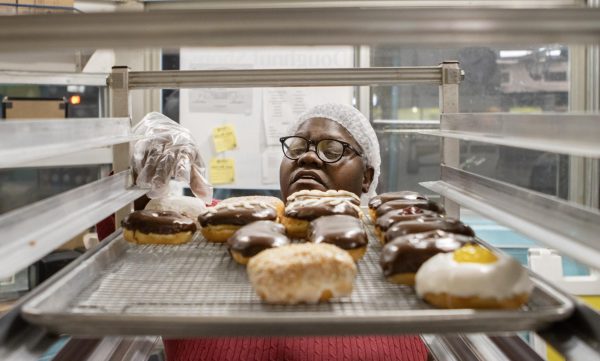Column: Whatever happened to Plan-A?
I am concerned.
I have concerns for a lot of little, petty things, but after reading last week’s story regarding the increase in the distribution of the Plan-B pill at Eastern, I am concerned for the health of our campus.
It was reported last week that the distribution of Plan-B pills at Health Services increased from two to three times a week to 12 to 15 times per week.
If the distribution of Plan-B pills had only gone up one or two more cases a week I don’t think I would have much of a concern because of the growth in Eastern’s student population. But the increase is at least six times the original amount, and this sparked my concern.
This increase could be taken two ways: either more students are still having protected sex but being extra careful by using Plan-B or more students are having unprotected sex and relying on Plan-B to counteract their irresponsibility.
Since the increase has jumped to 12 to 15 times per week, I have a hard time believing its cause does not stem from the latter reason.
This concerns me.
Are students only worried about becoming pregnant after having unprotected sex? Are they relying solely on a new drug to keep them safe?
Plan-B does not protect against or prevent sexually transmitted diseases. Not only does this pill not protect against STDs, it is also a new product, and we are not sure what the long-term effects, if any, may be. With all of the recent health concerns found with Federal Drug Administration-approved drugs such as Vioxx, I wouldn’t trust taking these pills like candy.
Though Health Services does not yet have statistics for the number of Eastern students with STDs so far this year, it does have statistics going back to 1996. In 1996, of 45 students tested, 20 tested positive. In 2004, of 83 students tested, 41 tested positive. These statistics were provided by Jenny Hagerstrom, a medical technologist at Health Services.
Compared to the total number of students on campus these numbers may seem minuscule. However, Hagerstrom said these statistics do not represent the entire campus because students who get tested at the Coles County Health Department, which Hagerstrom said is many, are not included. More students opt to go to CCHD because they swab your mouth rather than taking blood like Health Services does.
Whether the numbers are large or small, the statistics do show an increase in the number of STDs on Eastern’s campus.
I don’t disagree with what Plan-B is intended for; people make mistakes, and this is a better and more cost-effective alternative than abortion.
I am just concerned because with such a high increase in the distribution of Plan-B, I feel students may be becoming more reliant on it rather then taking responsible actions in the first place. I am concerned Plan-B may be making it easier for students to have unprotected sex, which we all know is not smart.
I don’t know exactly why the increase is so large, and I wouldn’t know unless I asked each student who came into Health Services why she is getting it.
All I know is that this pill only prevents pregnancy, not the chance of contracting STDs, and students shouldn’t be relying solely on this contraceptive to avoid pregnancy.











































